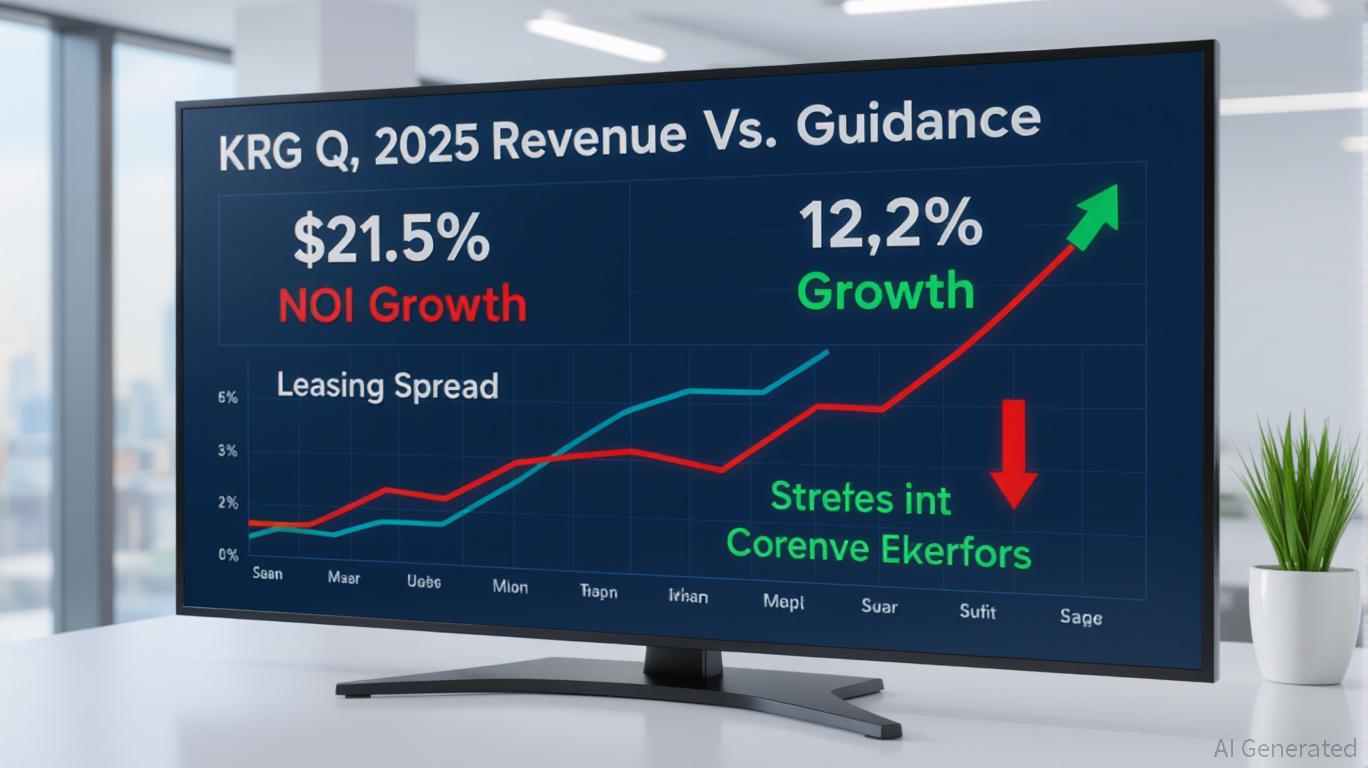AAVE -3.37% 7-Day Surge Despite Year-Long Downtrend as Market Integrates
- Aave's AAVE token fell 0.89% in 24 hours to $207.68 despite a 3.37% 7-day rally amid strategic integrations. - Aave Horizon's partnership with VanEck's VBILL tokenized Treasury fund enables institutional-grade collateral via Chainlink and Securitize infrastructure. - The integration creates arbitrage opportunities with 4.84%+ potential returns through VBILL collateralized RLUSD borrowing strategies. - Backtests show Aave outperformed BTC by +14.54% over 30 days post-announcement, with 67% positive excess
As of November 8, 2025,
The DeFi platform has continued to attract attention as it expands its integrations and forges new strategic alliances. A significant update was the integration of VanEck’s tokenized U.S. Treasury fund, VBILL, into Aave Horizon’s Real-World Asset (RWA) market. This integration allows institutional-grade assets to serve as collateral within the Aave network. With this setup, VBILL—which represents short-term U.S. Treasury bills—can now be deposited to back loans, opening up yield-generating opportunities for eligible users.
The technical framework utilizes Chainlink’s NAV oracle for real-time valuation of VBILL and Securitize’s platform for immediate issuance and regulatory compliance. Aave Horizon, operating as a permissioned lending platform, enables traditional financial instruments to be used in a blockchain environment, creating a hybrid system that connects institutional finance with DeFi.
This financial structure creates room for arbitrage. Currently, VBILL provides a 7-day yield of 3.93%, while borrowing RLUSD incurs a cost of about 2.84%. Users can exploit this difference by depositing VBILL as collateral, borrowing RLUSD, and reinvesting the borrowed capital to boost their returns. After one round, the projected yield increases to 4.84%, and with repeated cycles, returns could reach up to 5.5%, depending on market conditions.
However, this approach carries risks related to liquidity and potential liquidation. If VBILL’s yield drops below the cost of borrowing, the arbitrage advantage disappears. Moreover, if VBILL’s price falls under $1, it could trigger liquidations, particularly for leveraged positions.
Backtest Hypothesis
The impact of integrating VanEck’s VBILL with Aave Horizon was assessed using an event-driven backtest covering January 1, 2022, to November 8, 2025. The analysis focused on three major announcement dates: April 23, 2024, and May 14 and 15, 2025. Each event was followed by a 30-day observation period, resulting in 312 trading days reviewed.
By analyzing daily closing prices of AAVE-USD and using BTC-USD as a benchmark, the cumulative average abnormal return (CAR) over the 30-day window was +14.54%, while the benchmark posted 3.93%. The outperformance became statistically significant from the second day and continued throughout the 30-day period. The win rate—measuring the proportion of events with positive excess returns—reached 67% by the end of the window.
These findings indicate that the market views Aave’s partnership with VanEck’s VBILL as a significant positive driver. The effect tends to last about a month, highlighting the impact of both the initial news and subsequent adoption milestones.
Disclaimer: The content of this article solely reflects the author's opinion and does not represent the platform in any capacity. This article is not intended to serve as a reference for making investment decisions.
You may also like
Zcash Price Explosion 2025: Why ZEC Coin Is Skyrocketing
COAI Token Fraud: Warning Signs and Dangers Associated with Investing in DeFi Tokens
- ChainOpera AI (COAI) token surged from $0.13 to $44.9 in 2025, attracting 1M users but raising red flags over centralization and speculative trading. - Top 10 wallets control 97% of COAI's supply, creating liquidity risks and contradicting DeFi's decentralized principles, per DeFi Scanner data. - Analysts warn of COAI's volatility (-28% weekly drops) and regulatory gray areas, despite audits and SEC's focus on other tokens like XRP . - Expert opinions diverge: some predict $26 price targets while critics

Hyperliquid News Today: Hyperliquid’s BLP: Protecting DeFi from Widespread Systemic Threats
- Hyperliquid tests BLP lending protocol on Hypercore testnet, aiming to enhance on-chain collateral management for DeFi risks. - DeFi vulnerabilities highlighted by $284M interconnected loans and a $15.16M liquidation loss, underscoring systemic instability. - Circle's USDC firearm purchase policy and EPAA's regulatory advocacy reflect evolving compliance challenges in decentralized finance. - BLP's success depends on user adoption and regulatory alignment amid growing demands for transparency and risk mi

Kite (KITE) Price Forecast and Market Outlook After Listing: Assessing Value, Institutional Engagement, and Near-Term Volatility Concerns
- Kite Realty (KRG) reported $4.82M Q3 2025 revenue shortfall despite 2.1% NOI growth and 12.2% leasing spreads. - Institutional ownership at 90.81% with $1.2B liquidity supports strategic grocery-anchored retail focus showing 56% leasing spreads. - Analysts cut price targets to $23-$26 while industry faces "F" rating due to macroeconomic risks and lack of sustainable earnings.
